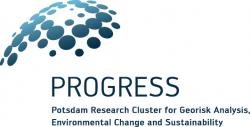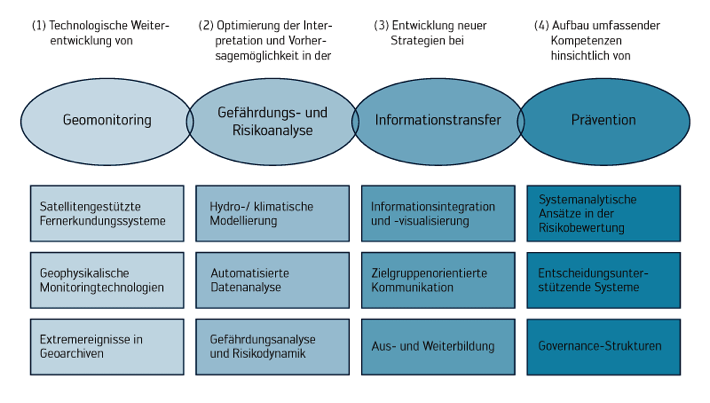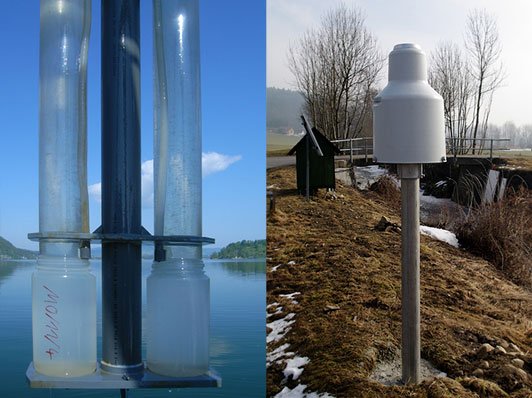BMBF joint research project PROGRESS

PROGRESS comprises the whole chain of natural hazard and geo-risk research spanning form process analysis to decision making. Section 5.2 Climate Dynamics and Landscape Evolution participates in topic A “Geomonitoring - Observation of natural hazards” with research to the detection and understanding of „Extreme Events in Geoarchives”.
Our sub-project: Linking detrital layers in lake sediments to catchment sediment dynamics
Background
The establishment of long flood time series from geoarchives is a key issue of modern palaeoclimatic research to investigate flood response to climate change. Lake sediments are particularly valuable flood archives because lakes trap flood-triggered catchment material resulting in long chronologies of detrital (‘event’) layers. A detrital layer chronology of the last 7,000 years obtained from annually laminated (varved) sediments of Lake Mondsee (Upper Austria) is currently under progress.
Approach
The objective of this study is to improve the interpretation of the detrital layer record by advancing knowledge about the process of flood layer deposition in lake sediments. To gain information about sedimentary dynamics within lake and catchment, we will combine the sediment archive of Lake Mondsee with ongoing hydrological and limnological monitoring.
Hydrological measurements comprise precipitation, water level and discharge, water temperature, electrical conductivity and turbidity as a measure for suspended matter in the river water. In combination with event-based automatic water sampling these parameters are measured at five gauging stations in the catchment of the main tributary Griesler Ache, following a nested catchment approach.
Four novel monitoring buoys profiling temperature, electric conductivity, turbidity as well as water flow velocity and direction, extend the network into the lake. The monitoring buoys are arranged along a transect from the Griesler Ache inflow to the location where the long master core was retrieved. Moreover, suspended sediment flux into the lake is collected by two chains of sequential and open sediment traps, one located close to the river inflow one close to the master coring site.
For identifying sediment distribution patterns and sediment sources during floods over the last 30 years, detrital layers have been correlated between 13 short cores retrieved from different locations of the lake floor.




